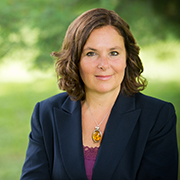The entire forest community is celebrating some huge news. The U.S. Green Building Council (USGBC) has created a pathway for forests certified to SFI to earn Leadership in Energy and Environmental Design (LEED) credits through a new pilot Alternative Compliance Path (ACP) credit that is designed to further advance environmentally responsible forest management and help rid our buildings of illegal wood by promoting the use of wood that is verified to be legal.

This happy day has been years in the making. A pathway to earning LEED credits has always been a priority for me because I’ve known for a long time that the SFI community would be a strong partner for the USGBC. The SFI community is dedicated to improving quality of life, responsible forest management, conservation and responsible procurement of forest products.
SFI’s commitment to these values is shared by other forest certification standards as well. So it’s wonderful to see this new LEED pathway includes the American Tree Farm System (ATFS), the Canadian Standards Association (CSA) and other standards around the world endorsed by the Programme for the Endorsement of Forest Certification (PEFC).
SFI has evolved and is aligned with LEED impact goals
LEED was created to help address climate change, enhance human health, protect water resources and biodiversity, promote sustainable material resources, build a greener economy, and enhance social equity and community quality of life.
SFI standards and SFI’s supporting programs are tightly aligned with these core LEED goals. After becoming a fully independent non-profit in 2007, conservation and community partnerships were identified as key priorities in SFI’s new strategic direction. Today, our conservation and community building credentials are the things I’m most proud of.
Over the last 20 years, the SFI standards, SFI community, and SFI programs have evolved and improved and have made a considerable contribution to our shared quality of life and how people view forests.
While globally, many are focused on minimizing the risks and guilt of using forest products, we are focused on a future where the global community has addressed deforestation and illegal logging, and takes pride in purchasing forest products derived from a responsibly managed renewable resource.
SFI remains focused on helping make the case that responsibly managed forests clean our water, filter our air, store carbon, conserve wildlife, and sustain livelihoods in many rural communities. This is part of our mission to encourage the spread of best practices and the adoption of responsible forestry.
A call to action for the SFI community to help move from pilot to permanent
Achieving recognition within LEED is a milestone we are celebrating. But now the real work begins. Before the USGBC decides to issue an updated version of LEED, it always examines who is using the credits and assesses the demand for them.
Ultimately, SFI’s success under the LEED pilot program will depend on demand from the people in the design and construction community who are pursuing LEED credits. If the SFI community comes together to encourage the use of wood and paper products certified to SFI in LEED projects, it will ensure we are recognized in the next version of LEED.
It’s time to seize the moment
I know we will come together to take advantage of this tremendous opportunity. And I would like to thank the leadership of USGBC for creating this pathway for SFI, and all standards dedicated to responsible forestry. I’m confident that this decision will turn out to be a shining example of how LEED doesn’t just transform buildings, but also our shared quality of life.
I would also like to express my gratitude to all the people in the SFI and green building communities who worked to make this a reality. It was truly a team effort with conservationists, brand owners, landowners, government officials, elected representatives, producers, architects and builders, and Tribes and First Nations coming together to elevate the role that renewable resources can play in green building.
My blog is the first in a series. You will be hearing from the forest community about green building in the days and weeks ahead, so stay tuned.
